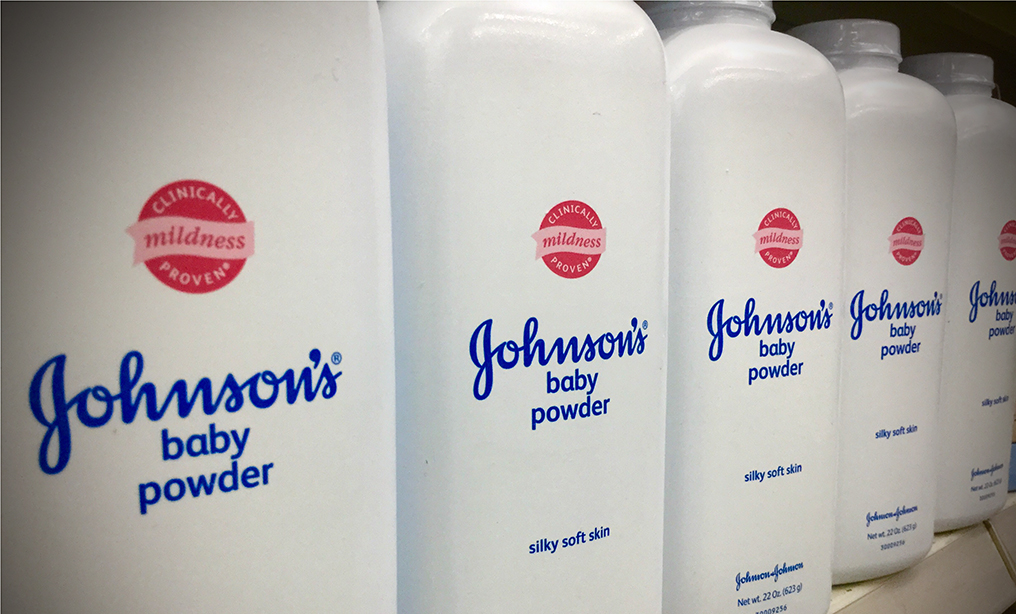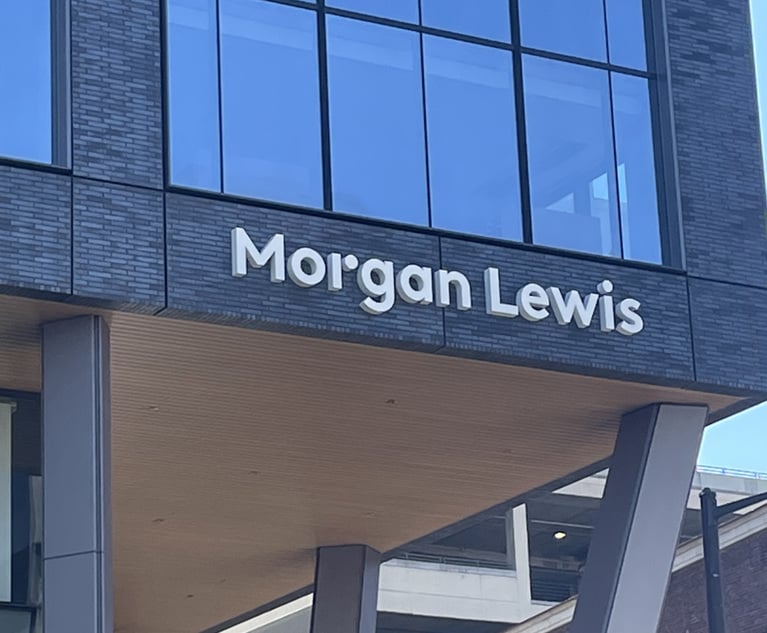Punitive Damages Phase After $25M Talc Verdict Won't Be Limited to J&J Finances, NY Judge Rules
New York Supreme Court Justice Gerald Lebovits on Monday ruled that the plaintiff should be able to introduce new evidence during the punitive damages phase.
May 28, 2019 at 01:28 PM
4 minute read
The original version of this story was published on New York Law Journal
 Johnson's baby powder. Photo: Flickr/Mike Mozart
Johnson's baby powder. Photo: Flickr/Mike Mozart
The judge overseeing the talc trial that last week resulted in a $25 million compensatory damages award has rejected Johnson & Johnson's efforts to limit the scope of the punitive damages phase solely to the company's financial information.
New York Supreme Court Justice Gerald Lebovits on Monday ruled that the plaintiff should be able to introduce new evidence during the punitive damages phase, including evidence of the company's out-of-state conduct and advertisements for its Baby Powder products that ran between the 1960s and 1990s.
The plaintiffs, Donna and Robert Olson, had also sought to have the jury consider evidence of J&J's conduct after 2015—the approximate date that Donna Olson stopped using the company's talcum powder—but Lebovits also rejected that request.
Monday's ruling came on the eve of the punitive damages phase of the case, which was set to begin Tuesday, and addressed the first impression issue of whether New York City Asbestos Litigation rules allow new evidence can be introduced during the punitive damages phase.
J&J had contended that only the company's financial information can be introduced during the punitive phase, but Lebovits said that, although the rules allow for limited discovery into a defendant's financial situation, they do not limit the evidence solely to financials. The judge further said New York law does not limit the permissible evidence solely to financials either.
“To be sure, the parties should avoid lengthy and potentially duplication presentations of evidence on punitive damages at Phase II here, particularly in view of the long duration of Phase I,” Lebovits said. “But the need judiciously to streamline the parties' Phase II presentations does not require wholesale preclusion of new evidence beyond financial condition.”
According to court documents, Olson sued J&J over claims that she regularly used talcum powder, including J&J's baby powder, from her childhood—beginning roughly in the year 1953—to 2015, and that this exposure caused her to develop mesothelioma. Olson also contended that, from the 1930s through the 1960s, the defendants should have become aware of the scientific data establishing the link between asbestos-containing products and cancer.
She contended that the defendants failed to properly warn about the dangers of the talc products and raised negligence and strict liability claims.
In court papers, the defendants disputed whether the J&J baby powder Olson used actually contained asbestos.
Last week a Manhattan jury awarded Olson $25 million over claims that she developed mesothelioma from prolonged exposure to asbestos-containing talcum powder. The award was entirely for punitive damages.
Along with asking the court to limit the new evidence at the punitive stage solely to financial information, J&J also contended that the plaintiffs should be barred from introducing evidence about the company's conduct outside New York, or introducing its old advertisements, contending that the underlying conduct would not have directly impacted Olson, but would have only impacted non-parties.
Lebovits, however, said the evidence was not being used to punish J&J for conduct that affected non-parties, but instead was being used to show the alleged “degree of reprehensibility” of J&J's conduct. Therefore, he said, the jury should be able to hear the evidence.
The plaintiffs had also sought to introduce evidence about J&J and its CEO making statements from 2018 and 2019 about the safety of its talcum powder, but Lebovits said due process barred that evidence, since Olson stopped using J&J's Baby Powder in 2015.
“The jury may not award punitive damages to punish J&J for any harm that J&J inflicted on nonparties,” Lebovits said.
Neither Jerome Block of Levy Konigsberg, who is representing Olson, nor a J&J spokeswoman immediately returned messages seeking comment Tuesday morning.
This content has been archived. It is available through our partners, LexisNexis® and Bloomberg Law.
To view this content, please continue to their sites.
Not a Lexis Subscriber?
Subscribe Now
Not a Bloomberg Law Subscriber?
Subscribe Now
NOT FOR REPRINT
© 2025 ALM Global, LLC, All Rights Reserved. Request academic re-use from www.copyright.com. All other uses, submit a request to [email protected]. For more information visit Asset & Logo Licensing.
You Might Like
View All
The Right Amount?: Federal Judge Weighs $1.8M Attorney Fee Request with Strip Club's $15K Award

Kline & Specter and Bosworth Resolve Post-Settlement Fighting Ahead of Courtroom Showdown
6 minute read
12-Partner Team 'Surprises' Atlanta Firm’s Leaders With Exit to Launch New Reed Smith Office
4 minute read
Morgan Lewis Shutters Shenzhen Office Less Than Two Years After Launch
Trending Stories
Who Got The Work
J. Brugh Lower of Gibbons has entered an appearance for industrial equipment supplier Devco Corporation in a pending trademark infringement lawsuit. The suit, accusing the defendant of selling knock-off Graco products, was filed Dec. 18 in New Jersey District Court by Rivkin Radler on behalf of Graco Inc. and Graco Minnesota. The case, assigned to U.S. District Judge Zahid N. Quraishi, is 3:24-cv-11294, Graco Inc. et al v. Devco Corporation.
Who Got The Work
Rebecca Maller-Stein and Kent A. Yalowitz of Arnold & Porter Kaye Scholer have entered their appearances for Hanaco Venture Capital and its executives, Lior Prosor and David Frankel, in a pending securities lawsuit. The action, filed on Dec. 24 in New York Southern District Court by Zell, Aron & Co. on behalf of Goldeneye Advisors, accuses the defendants of negligently and fraudulently managing the plaintiff's $1 million investment. The case, assigned to U.S. District Judge Vernon S. Broderick, is 1:24-cv-09918, Goldeneye Advisors, LLC v. Hanaco Venture Capital, Ltd. et al.
Who Got The Work
Attorneys from A&O Shearman has stepped in as defense counsel for Toronto-Dominion Bank and other defendants in a pending securities class action. The suit, filed Dec. 11 in New York Southern District Court by Bleichmar Fonti & Auld, accuses the defendants of concealing the bank's 'pervasive' deficiencies in regards to its compliance with the Bank Secrecy Act and the quality of its anti-money laundering controls. The case, assigned to U.S. District Judge Arun Subramanian, is 1:24-cv-09445, Gonzalez v. The Toronto-Dominion Bank et al.
Who Got The Work
Crown Castle International, a Pennsylvania company providing shared communications infrastructure, has turned to Luke D. Wolf of Gordon Rees Scully Mansukhani to fend off a pending breach-of-contract lawsuit. The court action, filed Nov. 25 in Michigan Eastern District Court by Hooper Hathaway PC on behalf of The Town Residences LLC, accuses Crown Castle of failing to transfer approximately $30,000 in utility payments from T-Mobile in breach of a roof-top lease and assignment agreement. The case, assigned to U.S. District Judge Susan K. Declercq, is 2:24-cv-13131, The Town Residences LLC v. T-Mobile US, Inc. et al.
Who Got The Work
Wilfred P. Coronato and Daniel M. Schwartz of McCarter & English have stepped in as defense counsel to Electrolux Home Products Inc. in a pending product liability lawsuit. The court action, filed Nov. 26 in New York Eastern District Court by Poulos Lopiccolo PC and Nagel Rice LLP on behalf of David Stern, alleges that the defendant's refrigerators’ drawers and shelving repeatedly break and fall apart within months after purchase. The case, assigned to U.S. District Judge Joan M. Azrack, is 2:24-cv-08204, Stern v. Electrolux Home Products, Inc.
Featured Firms
Law Offices of Gary Martin Hays & Associates, P.C.
(470) 294-1674
Law Offices of Mark E. Salomone
(857) 444-6468
Smith & Hassler
(713) 739-1250








